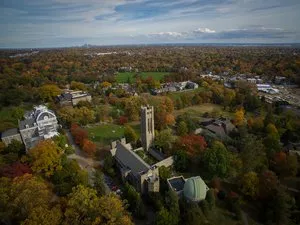The People's Torah:
Ansky and the Invention of Jewish Ethnography
by Nathaniel Deutsch
In 1908, the Russian Jewish writer known as Ansky, who later gained fame for his play "The Dybbuk," published a groundbreaking essay on Jewish ethnography. Ansky began by sardonically observing "there is no other people like the Jewish people, that talks about itself so much, but knows itself so little." The problem, in Ansky's view, was that Jews had yet to study themselves ethnographically. Ironically, Ansky noted, there were many prominent Russian Jewish ethnographers who wrote about "savage" tribes in Siberia and elsewhere. These included Lev Shternberg, a colleague of Franz Boas, who would eventually become one of Ansky's closest collaborators. None, however, had "dedicated their time to constructing the elements of a distinctly Jewish ethnography." For this reason, Ansky lamented, "the Jewish people still awaits its own ethnographer."
In an era when figures along the religious and political spectrum hotly debated what it meant for Jews to be a people, or even more fundamentally, whether Jews were a people -- i.e. the so-called Jewish Question -- Ansky's call for a Jewish ethnography was nothing less than revolutionary. Rather than viewing folk practices and beliefs as an embarrassment, at best, or a serious impediment to the entrance of Jews into modernity, at worst, Ansky argued that Jewish folk traditions occupied the material and spiritual center of Eastern European Judaism.
From 1908 until his death in 1920, Ansky devoted himself to becoming the Jewish people's own ethnographer, a role he saw in increasingly prophetic terms. He helped found the Society for Jewish History and Ethnography in St. Petersburg and took a leading role in several journals. Most importantly, Ansky led a team of folklorists, photographers, artists, and musicologists on an unprecedented ethnographic expedition into the Pale of Settlement, the area of the Russian Empire open to Jews. By 1914, the expedition had amassed 2,000 photographs, 1,000 folksongs, 1,800 tales and proverbs, 500 phonographic cylinders, and hundreds of remedies, spells, and ritual and everyday objects. This material represented the richest archive of Jewish folk culture ever collected, but it lacked any conceptual or taxonomic framework.
In order to construct such a framework, Ansky designed "The Jewish Ethnographic Program" (Dos yidishe etnografishe program), a truly remarkable document that represented the culmination of several years of intense fieldwork and the combined insight and knowledge of a team of experts. Ansky developed the "Jewish Ethnographic Program" for several reasons. First, he presciently believed that traditional Jewish culture in Eastern Europe was in danger of disappearing due to the combined forces of immigration, assimilation, and oppression. Second, he wanted to distribute the "Program" to communities throughout the Pale of Settlement and, in the process, to transform hundreds or even thousands of Jews on the ground into amateur ethnographers (Yiddish, zamlers). In this way, Ansky would turn ethnography into an ongoing activity of Jews from a variety of backgrounds, rather than just a pursuit by and for a scholarly elite.
"The Jewish Ethnographic Program" consists of 2,087 Yiddish questions concerning Jewish life and death in the Pale of Settlement. Although the vicissitudes of World War I prevented Ansky from ever distributing the survey, the extraordinarily rich and revealing character of the questions, themselves, makes the "Program" one of the most illuminating and important ethnographic records of Eastern European Jewish culture ever produced. Indeed, it is like a time capsule containing a veritable repository of Jewish folk practices and beliefs.
There is something classically rabbinic about a text comprised entirely of questions without answers, an observation that Ansky, who had received a traditional Jewish education as a child, would have appreciated. In his introduction to the Jewish Ethnographic Program," Ansky explicitly described the Jewish folk traditions he sought to collect as: "Oral Torah. The people, themselves, especially the common folk have continually created this Torah during their long, hard, and tragic history." Like Judah the Prince, whom Jewish tradition depicts as writing down the Mishnah (i.e. the original Oral Torah) in 200 CE because it was in danger of being forgotten, Ansky sought to compile the "People's Torah" before it disappeared.
Nathaniel Deutsch, Associate Professor of Religion at Swarthmore, teaches courses in Judaism, early Christianity, Gnosticism, and the history of religions. He is the author of two books on early Jewish mysticism and Gnosticism (E.J. Brill, 1995; 1999) and the co-editor of a book on African American religions and Judaism (Oxford University Press, 1999). His biography, The Maiden of Ludmir: A Jewish Holy Woman and Her World (University of California Press, 2003), was named a National Jewish Book Award Finalist. Professor Deutsch is currently working on two books: The Tribe of Ishmael: Eugenics, Islam, and the Invention of an American Myth and The People's Torah: Ansky and the Invention of Jewish Ethnography.



